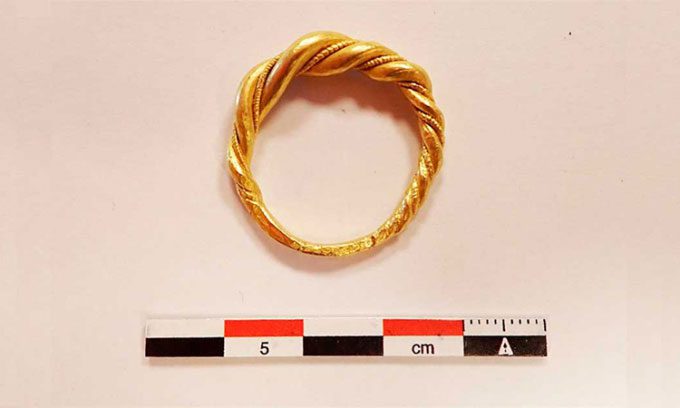The 11-gram gold ring is likely to have been crafted at the end of the Iron Age and belonged to a Viking leader.
Mari Ingelin Gausvik Heskestad, a woman living in Norway, discovered a special gold ring among inexpensive jewelry such as bracelets, earrings, and pendants in an online auction. The identification process for the ring went smoothly as Heskestad quickly contacted archaeologists in Vestland County after her father suggested it might be an ancient ring, reported Ancient Origins on July 11.

Viking gold ring weighing 11 grams found in Norway. (Photo: Vestland County Municipality)
The gold ring is likely to have been made at the end of the Iron Age (400 – 800 AD). “This is a characteristic type of ring found in Viking-era discoveries, including graves in Norway. Some are made of gold, others of silver, and some are made of gold-plated bronze,” said Unn Pedersen, the archaeologist analyzing Heskestad’s ring. A similar ring was found in Norway in 2019, belonging to a Viking leader.
Both Viking men and women wore jewelry as a symbol of wealth and social status. Silver was much more common and less valuable than gold. Gold jewelry indicated that the wearer had a high social and economic status.
“Gold was a precious and expensive material during the Viking Age, used to symbolize power and display rank. I believe that the gold ring may have belonged to someone from the elite, possibly one of the leaders of small territories,” Pedersen stated.
“Based on information provided by local archaeologists, the ring is of a size suitable for men. However, Viking gold rings have also been found in women’s graves. The Oseberg ship burial, with its rich equipment, shows that women could also be leaders,” she added.
The gold ring that Heskestad found weighs 11 grams (0.4 ounces). It is currently owned by the University Museum of Bergen and will be on display throughout this fall.





















































